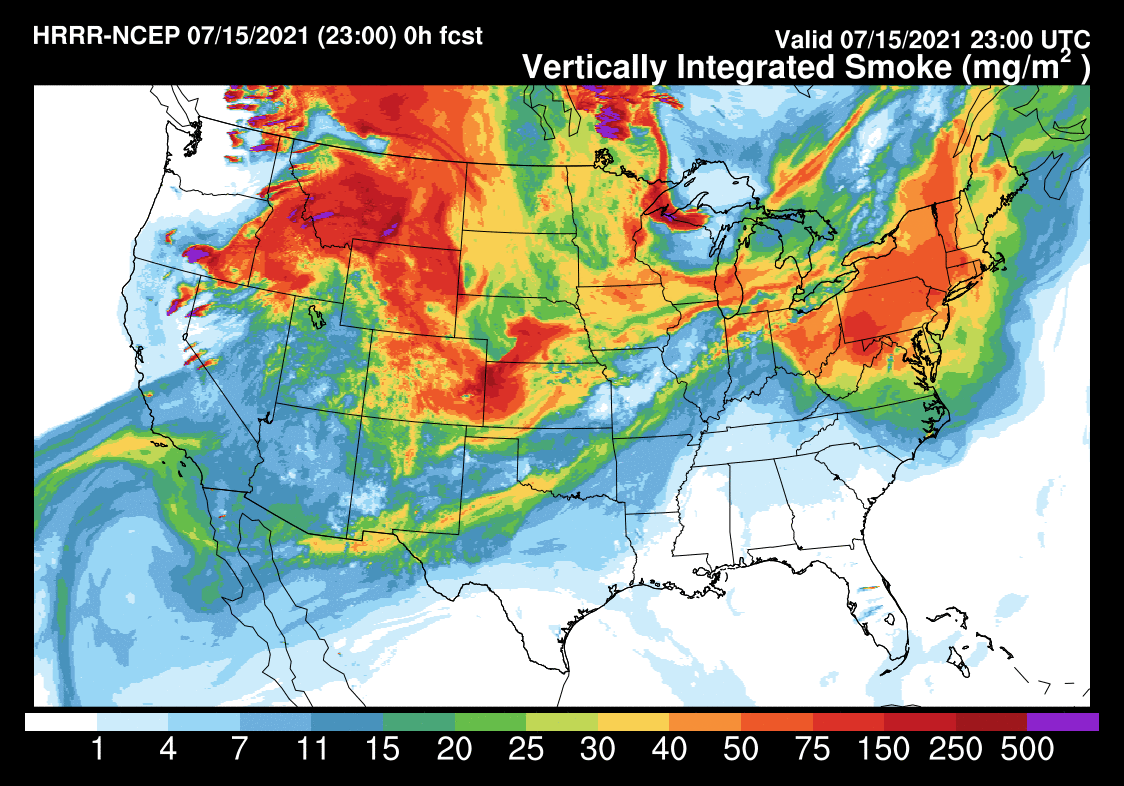
A superfluous amount of smoke rising from wildfires in the western United States and the right conditions in the atmosphere are creating conditions ripe for red evening skies. With smoke expected to smother the U.S. in the short term, viewers of color-rich sunsets should be on alert; the sunsets will be especially red due to the presence of high atmospheric smoke. The sky gets it colors from Rayleigh and Mie scattering, and in a smokey situation, Mie scattering dominates producing red, orange, and pink hues in the sky.
In an ordinary situation, light rays from the sun pass through the atmosphere, striking small objects too small to be seen by the human eye such as molecules of nitrogen and oxygen. When light rays bounce off these super tiny objects, they scatter off into all sorts of directions. The short wavelengths of blue light are scattered more efficiently by small objects than those of other colours; because of this, the sky appears blue most of the time.
Smoke particles scatter light much differently. Because smoke particles are much larger than gas molecules, and thus are visible to the naked eye, they better scatter the long wavelengths of red light. This scattering, known as Mie scattering, will bring about skies that appear more red than blue. When there’s a rich concentration of smoke particles, Mie scattering can dominate over Rayleigh scattering bringing about red skies.
Vivid colors tend to pop in the sky at sunrise and sunset even without the presence of smoke. Because the sun is low on the horizon and the visible light from the sun has more atmosphere to pass through before reaching the surface, other colors can appear in the sky. Colors such as violet, blue and green have shorter wavelengths, and air particles absorb and scatter that light before it can pass through. In the opposite, red and orange have longer wavelengths, so those colors are able to travel through the atmosphere and make it to our eyes. Because of that, sunsets can feature reds and oranges even without smoke.
But with smoke now present in much of the atmosphere due to wildfires currently burning across the western United States, sunsets will be especially red until their smoke dissipates.